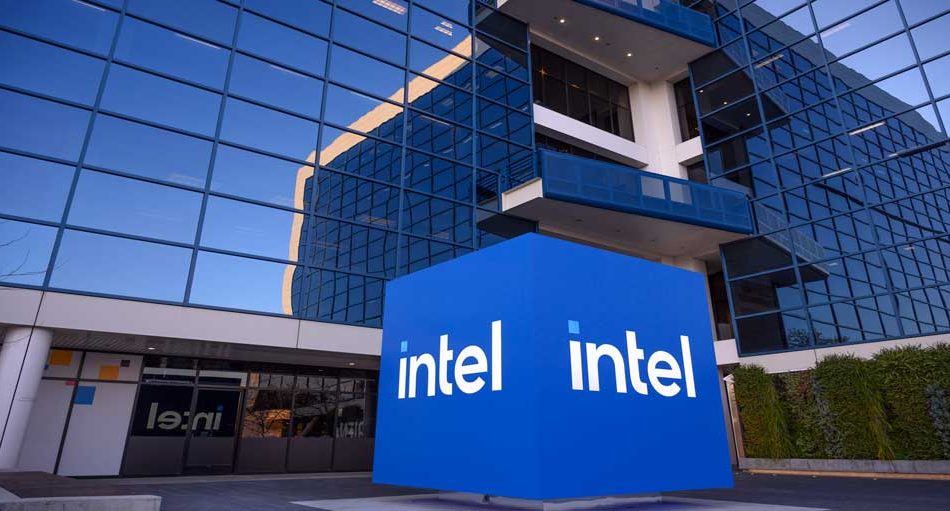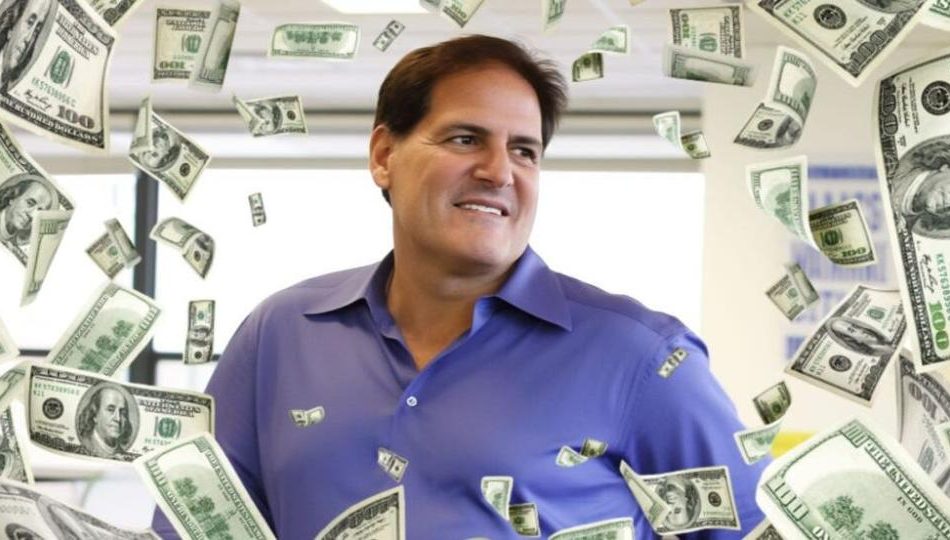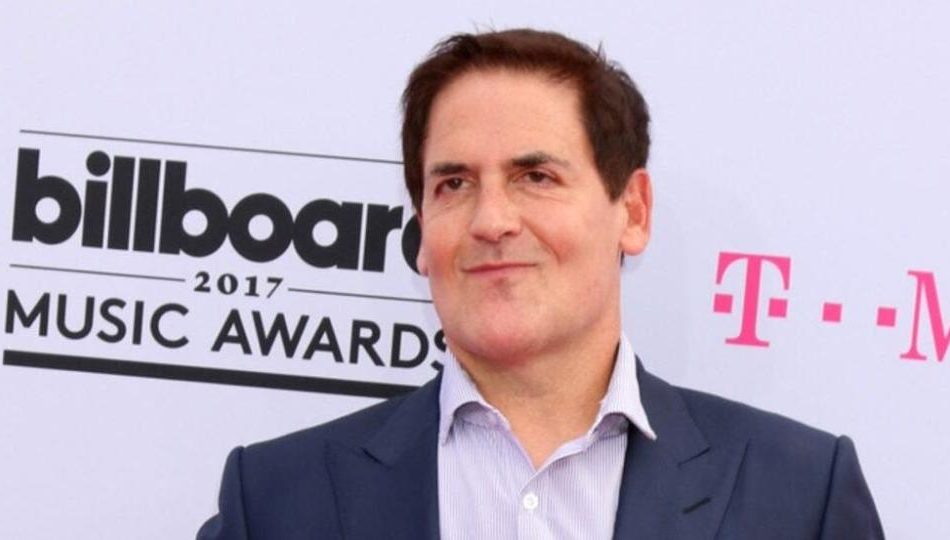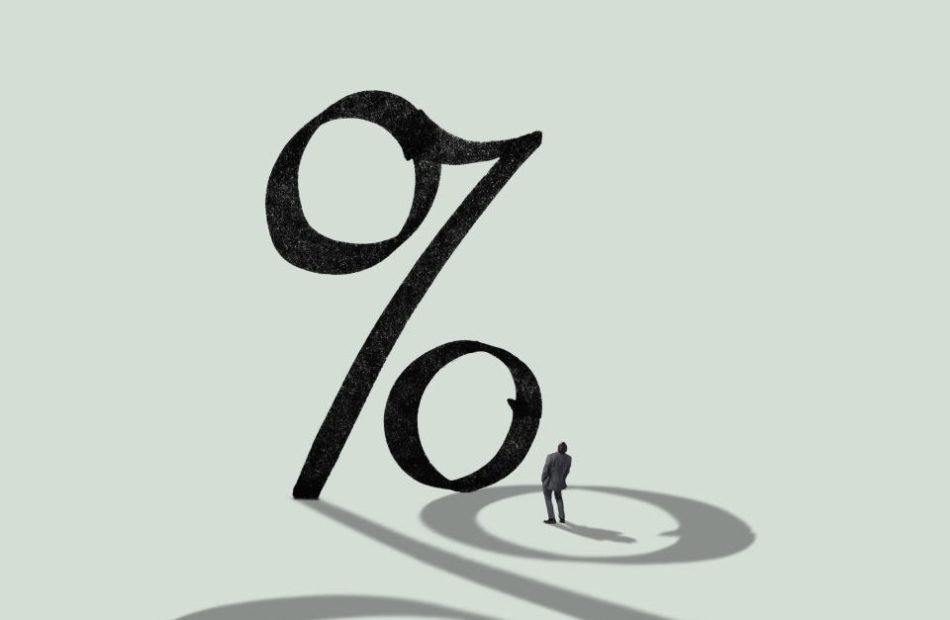Intel Rallies On Report Chip Giant Is Exploring Options Including Foundry Split
Intel (INTC) stock jumped Friday on a report that the chip giant is considering major changes, including spinning off or selling its manufacturing business.
↑
X
Broadcom Earnings Due: Will Nvidia’s Influence Spark A Move?
Intel is in talks with investment bankers to explore different options for the semiconductor behemoth, Bloomberg reported, citing unnamed sources. The company is also considering scrapping factory projects and M&A deals, the report said. Intel is expected to present the options at a board meeting in September, the report said.
Intel stock rallied 9.5% to close at 22.04, helping lift the Dow Industrial Average. The Santa Clara, Calif.-based company has struggled recently against faster-growing rivals led by Nvidia (NVDA) and AMD (AMD). Intel also has lagged rivals in the hottest trend now sweeping the tech industry, artificial intelligence.
Intel badly missed Wall Street estimates when it reported earnings earlier this month. The results led Intel to announce a $10-billion cost reduction plan and to suspend its quarterly dividend.
Intel Stock: Challenging Quarterly Results
The company also posted a downbeat outlook. “If Q2 results were challenged, Q3 outlook was awful (setting a new record for the worst we’ve ever seen the company put up),” Bernstein Research analyst Stacy Rasgon told clients in a note.
Spinning off or selling its manufacturing business would be a major shift in Intel’s business. For decades, Intel dominated the chip industry with its state-of-the-art manufacturing technology. But the company has lost its dominant position in semiconductor manufacturing in the last few years.
Intel shares have shed more than 50% this year. The stock has a dismal Relative Strength rating of 6 out of a best-possible 99.
YOU MAY ALSO LIKE:
IBD Live: A New Tool For Daily Stock Market Analysis
Alnylam Plummets, Reversing 50% Gain This Year, As Pfizer Rival Lags Expectations
Find Winning Stocks With MarketSurge Pattern Recognition & Custom Screens
How Nvidia Is Building A Competitive Moat To Fend Off AI Challengers
3 Rock-Solid Pharma Stocks to Buy Now and Hold Forever
Almost every portfolio needs a couple of anchor stocks that tend to grow consistently over time regardless of the mood of the market or the state of the economy. Thanks to the must-buy nature of lifesaving medicines and the regular launch of new and improved drugs, pharma stocks are a good place to look for the anchors that might be right for you.
In that vein, there are three rock-solid pharma stocks in particular that are strong enough to buy today and enduring enough to hold for years, accruing growth all along the way. Let’s take a look at each to appreciate why they could be great additions to your portfolio.
1. Abbott Laboratories
Abbott Laboratories (NYSE: ABT) offers the diversification and stability that most investors want from pharma stocks but often struggle to find. In the second quarter, its portfolio of pharmaceuticals brought in nearly $1.3 billion, up by 8.1% year over year.
But drugs aren’t its only line of business. It also makes diagnostics, medical nutrition products, medical devices, and medical tools like cardiac stents. Hospitals need its goods to continue operating, even if they’re not trying to do anything fancy, which makes its revenue highly recurring in nature, as well as somewhat protecting the top line from the impact of downturns. That’s why Abbott is a company that isn’t going away anytime soon.
Over the last five years, its trailing-12-month normalized diluted earnings per share (EPS) rose by 66.4%, reaching $3.17. Thanks to the successful ongoing rollout of its new Freestyle Libre continuous glucose monitor (CGM) products, Wall Street analysts estimate that in its next fiscal year, its EPS will rise even higher to $5.13.
It’s especially appealing to hold due to its status as a Dividend King. While its forward yield of around 2% won’t make you rich, if you hold its shares for 10 years, assuming they’re similar to the last 10 years, you could see its annual dividend grow by 150%, which makes the proposition a lot sweeter.
2. AbbVie
AbbVie (NYSE: ABBV) is another pharma stalwart that actually spun off from Abbott Labs in 2013 so that Abbott’s primary pharmaceutical development business wouldn’t be encumbered by its other segments. In a nutshell, that means it’s exposed to more downside risk from its clinical trials potentially falling short of its targets, but it’s also exposed to more upside as a result of the premium associated with uncertainty.
In 2025 alone, it expects to get regulatory approval for at least five of its pipeline programs across diverse indications ranging from migraine prevention to myelodysplastic syndrome (MDS). In the same period, it plans to submit another four petitions to regulators for approval, setting it up for as many new approvals during the following year. As a result, analysts see its normalized diluted EPS exploding from $3.58 over the last four quarters to an annual total of $13.47 in two fiscal years from now.
A couple of the primary drivers of that growth are great illustrations for one of AbbVie’s core advantages: The ability to squeeze more and more sales out of its commercialized medicines by pursuing further research and development (R&D) to get them approved to treat additional conditions. Its drugs, Skyrizi and Rinvoq, are expected to bring in a total of $16 billion in 2024. By 2027, however, management is banking on the pair bringing in more than $27 billion as a result of diligent ongoing R&D efforts.
With such a strong demonstrated ability to keep tacking on expansions to its addressable markets — a capability that management doubtlessly plans around well in advance — AbbVie can thus deliver good returns to shareholders over time even if it only launches a couple of completely new products.
3. Vertex Pharmaceuticals
Vertex Pharmaceuticals (NASDAQ: VRTX) is a rock-solid investment because it has a mixture of market mastery and diversification. Its main line of business, developing therapies for cystic fibrosis (CF), is humming along, with a new medicine up for approval in early 2025 if regulators assent. Outside of CF, it’s also waiting to hear back about its acute pain candidate, which regulators will decide on at the end of January.
In the last five years alone, Vertex’s quarterly revenue climbed by 178.5%, or $934.9 million. Even more impressively, its quarterly operating income soared by 814% to above $2.6 billion.
The strategy is simple. As it’s the only drug developer with products that can treat the root causes of CF rather than just the symptoms, it has no competition for its market. It continuously develops and repackages its already-approved therapies for CF into new combinations, offering incremental improvements to efficacy along the way. Then, it funnels some of the proceeds to diversification into new programs in other verticals, fueling its potential for faster growth.
It will doubtlessly attempt to develop a cure for CF one day. That is likely to happen after its portfolio is sufficiently diversified among treating other illnesses. And, as shown by the recent launch of its cell therapy Casgevy for sickle cell disease (SCD) and beta-thalassemia, it’s not afraid of taking a cutting-edge approach wherever it competes. In biopharma, it’s hard to do better for long-term growth potential than Vertex.
Should you invest $1,000 in Abbott Laboratories right now?
Before you buy stock in Abbott Laboratories, consider this:
The Motley Fool Stock Advisor analyst team just identified what they believe are the 10 best stocks for investors to buy now… and Abbott Laboratories wasn’t one of them. The 10 stocks that made the cut could produce monster returns in the coming years.
Consider when Nvidia made this list on April 15, 2005… if you invested $1,000 at the time of our recommendation, you’d have $769,685!*
Stock Advisor provides investors with an easy-to-follow blueprint for success, including guidance on building a portfolio, regular updates from analysts, and two new stock picks each month. The Stock Advisor service has more than quadrupled the return of S&P 500 since 2002*.
*Stock Advisor returns as of August 26, 2024
Alex Carchidi has no position in any of the stocks mentioned. The Motley Fool has positions in and recommends Abbott Laboratories and Vertex Pharmaceuticals. The Motley Fool has a disclosure policy.
3 Rock-Solid Pharma Stocks to Buy Now and Hold Forever was originally published by The Motley Fool
Dividend Investor Who Earns $21,903 Per Year Shares His Top 10 Portfolio Holdings
Benzinga and Yahoo Finance LLC may earn commission or revenue on some items through the links below.
Dividends have always been tempting for investors looking for a regular income stream, especially when the stock market is volatile and inflation is high. But reaching a decent dividend income target isn’t easy: you have to add reliable dividend stocks and ETFs in your portfolio with significant yields as well as strong fundamentals.
About nine months ago someone asked Redditors on r/Dividends how to earn $2,000 per month in dividends. The response was prolific, with many investors sharing their portfolios and secrets. In the discussion thread, a Redditor claimed he’s making about $21,903 annually in dividends with an initial investment of $350,000.
Don’t Miss Out:
-
This billion-dollar fund has invested in the next big real estate boom, here’s how you can join for $10.
This is a paid advertisement. Carefully consider the investment objectives, risks, charges and expenses of the Fundrise Flagship Fund before investing. This and other information can be found in the Fund’s prospectus. Read them carefully before investing. -
A billion-dollar investment strategy with minimums as low as $10 — you can become part of the next big real estate boom today.
This is a paid advertisement. Carefully consider the investment objectives, risks, charges and expenses of the Fundrise Flagship Fund before investing. This and other information can be found in the Fund’s prospectus. Read them carefully before investing.
Let’s take a look at the portfolio.
The ETFs and stocks mentioned in the article are purely for informational purposes and are based on an income report/comment shared by an investor on Reddit. These are not recommendations or investing advice.
SPDR Portfolio S&P 500 High Dividend ETF
The investor who shared his portfolio details claiming to be earning over $21,000 per year in dividends annually said that about 25% of his portfolio is allocated to SPDR Portfolio S&P 500 High Dividend ETF (NYSE:SPYD) that yields over 4% and tracks the total return performance of the S&P 500 High Dividend Index. Some of the top holdings of the fund include Kellanova, Public Storage, Hasbro and Simon Property, among others.
Schwab US Dividend Equity ETF
Schwab US Dividend Equity ETF (SCHD) is another top dividend ETF in the portfolio of the Redditor who claimed to be making $21,903 per year in dividends. SCHD tracks the Dow Jones U.S. Dividend 100 Index and gives investors exposure to some of the top dividend stocks trading in the U.S., including Home Depot, Coca-Cola, Verizon, Lockheed Martin, Pepsi, and AbbVie, among many others. This ETF can be ideal for investors looking for higher total returns instead of just dividend income.
Realty Income
About 10% of the Redditor’s dividend income portfolio earning over $21,000 per year is allocated to Realty Income Corp (NYSE:O). Realty Income is one of the most popular monthly dividend stocks with an over 5% yield. Realty Income Corp has increased its payouts for 30 straight years. It posted strong quarterly results earlier this month and affirmed guidance. With interest rate cuts around the corner, Realty Income’s Corp (NYSE:O) business is expected to see growth as most of the company’s biggest tenants are retailers that were negatively impacted by rate hikes.
Amplify CWP Enhanced Dividend Income ETF
Amplify CWP Enhanced Dividend Income ETF (NYSE:DIVO) generates monthly income by selling covered calls. Some of the top holdings of the ETF include UnitedHealth, JPMorgan, Caterpillar, Home Depot and Procter & Gamble. The ETF has over $3.4 billion in assets and has gained much popularity on Reddit. According to a Redditor who did some backtesting in November 2022, a $10,000 investment in the ETF at its inception in 2016 would have increased to $19,970 vs. $19,614 for SPY with dividends reinvested. As of Aug. 28, the ETF yields about 4.5%.
Main Street Capital
Another monthly dividend stock in the portfolio earning over $21,000 a year in dividends, Main Street Capital Corp (NYSE:MAIN) is a business development company. The company never reduced its dividend and has increased its payouts by 120% since going public.
iShares International Select Dividend ETF
iShares International Select Dividend ETF (IDV) is a dividend ETF for investors interested in gaining exposure to top companies outside of the U.S. and Canada. The ETF tracks the Dow Jones EPAC Select Dividend Index and yields about 6%. Some of the top holdings of the fund are British American Tobacco, BHP GROUP, Vodafone, Rio Tinto and Imperial Brands.
Stag Industrial
Stag Industrial (NYSE:STAG) is an industrial REIT that pays monthly dividends. It has a dividend yield of about 3.6%. The Redditor said that about 7.5% of his dividend portfolio is allocated to this stock. Last month Stag Industrial reported better-than-expected second-quarter results. FFO in the quarter totaled $0.61, beating estimates by $0.02. Revenue rose about 10.5% year over year to $189.78 million, surpassing estimates by $1.66 million.
Read More:
Reaves Utility Income Fund
Reaves Utility Income Fund (UTG) invests in utilities and infrastructure companies to generate monthly dividend income for investors. The fund yields about 8% and distributes monthly dividends. Some of the top holdings of the fund include Talen Energy Corp., Constellation Energy, Vistra, and CenterPoint Energy.
JPMorgan Nasdaq Equity Premium Income ETF
JPMorgan Nasdaq Equity Premium Income ETF (NASDAQ:JEPQ) is another high-yield covered call ETF in the Redditor’s portfolio earning about $21,000 annually in dividends. The ETF invests in Nasdaq companies and generates extra income by selling call options.
JPMorgan Equity Premium Income ETF
JPMorgan Equity Premium Income ETF (NYSE:JEPI) generates income by investing in large-cap U.S. stocks and selling call options. The ETF usually underperforms during bull markets and protects investors against huge losses during bear markets since most of its portfolio consists of large, defensive equities like Trane Technologies PLC (NYSE:TT), Southern Co (NYSE:SO) and Progressive Corp (NYSE:PGR). The Redditor said about 5% of his portfolio is allocated to JEPI.
A 9% Return In Just 3 Months
EquityMultiple’s ‘Alpine Note — Basecamp Series’ is turning heads and opening wallets. This short-term note investment offers investors a 9% rate of return (APY) with just a 3 month term and $5K minimum. The Basecamp rate is at a significant spread to t-bills. This healthy rate of return won’t last long. With the Fed poised to cut interest rates in the near future, now could be the time to lock in a favorable rate of return with a flexible, relatively liquid investment option.
What’s more, Alpine Note — Basecamp can be rolled into another Alpine Note for compounding returns, or into another of EquityMultiple’s rigorously vetted real estate investments, which also carry a minimum investment of just $5K. Basecamp is exclusively open to new investors on the EquityMultiple platform.
Looking for fractional real estate investment opportunities? The Benzinga Real Estate Screener features the latest offerings.
This article Dividend Investor Who Earns $21,903 Per Year Shares His Top 10 Portfolio Holdings originally appeared on Benzinga.com
Mark Cuban Shares How To Get Rich: 'Loved My Life Eating Mustard and Ketchup Sandwiches' But Says It's Definitely Better Having Money
Mark Cuban, the billionaire entrepreneur and former owner of the Dallas Mavericks, is no stranger to sharing his thoughts on wealth and success. In a 2008 blog post titled “How to Get Rich,” Cuban laid out his straightforward, no-nonsense advice on achieving financial success.
Don’t Miss:
Cuban reminisced about his early days, saying, “I’m certainly not going to lie and say it is not much better having lots of money. I had a whole lot of fun and loved my life when I was eating mustard and ketchup sandwiches and sleeping on the floor of a 3-bedroom apartment that housed me and five buddies.” Despite his modest beginnings, Cuban is clear that his life has improved with wealth. “I have a whole lot more fun now. It doesn’t suck to be rich.”
However, Cuban is quick to caution against the allure of quick fixes and easy money. “There are no shortcuts. NONE,” he emphasized. During financial uncertainty, such as the 2008 economic downturn, Cuban warned of scams and schemes that prey on those desperate for financial success. “The less money you have, the more likely someone will come at you with some scheme. The schemes will guarantee returns, use multilevel marketing, or be something crazy that is now ‘backed by the U.S. Government.’ Please ignore them,” he advised.
Trending:
Cuban’s approach to getting rich is grounded in practicality and discipline. “Save your money. Save as much money as you possibly can. Every penny you can,” he wrote. Cuban encourages cutting unnecessary expenses and living frugally as the first step toward building wealth. “Instead of coffee, drink water. Instead of going to McDonald’s, eat Mac and Cheese. Cut up your credit cards. If you use a credit card, you don’t want to be rich.”
The billionaire also emphasized the importance of having cash on hand, especially during market volatility. “The first step to getting rich is having cash available,” Cuban noted. He criticized the traditional buy-and-hold investment strategy, pointing out that those who followed it often found themselves without cash when opportunities arose. “Buy and hold is a sucker’s game for you,” he stated, adding that those who saved their money in safer vehicles like CDs could capitalize on opportunities during economic downturns.
See Also:
Cuban’s second rule for getting rich is to invest time in yourself and become knowledgeable about a business you love. “Whatever your hobbies, interests, passions are … GET A JOB in the business that supports it,” he advised. Cuban highlighted the value of learning on the job, stating that working in an industry you’re passionate about is akin to getting paid to learn.
“This is not a short-term project. We aren’t talking days. We aren’t talking months. We are talking years. Lots of years and maybe decades,” Cuban wrote. He emphasized that there’s no perfect path to wealth, but with patience and preparation, the right opportunity will eventually present itself.
Trendng:
Cuban concluded his advice by underscoring the cyclical nature of business, with periods of boom and bust. “Booms are when the smart people sell. Busts are when rich people started on their path to wealth,” he wrote. According to Cuban, the key is to be prepared when the time comes. “The question is whether you have the discipline to be ready when it happens for you?”
Read Next:
Mark Cuban’s journey from eating mustard and ketchup sandwiches to becoming a billionaire is a testament to the power of discipline, knowledge, and preparation. While he doesn’t sugarcoat the reality that having money is better, his advice remains grounded in the belief that success is within reach for those willing to work for it.
“ACTIVE INVESTORS’ SECRET WEAPON” Supercharge Your Stock Market Game with the #1 “news & everything else” trading tool: Benzinga Pro – Click here to start Your 14-Day Trial Now!
Get the latest stock analysis from Benzinga?
This article Mark Cuban Shares How To Get Rich: ‘Loved My Life Eating Mustard and Ketchup Sandwiches’ But Says It’s Definitely Better Having Money originally appeared on Benzinga.com
© 2024 Benzinga.com. Benzinga does not provide investment advice. All rights reserved.
werwer
werwerwerwer
The Luckiest Guy In The World?' Mark Cuban Net Worth 2024: How Much Does He Earn? What Does He Own?
Mark Cuban, a billionaire known for his role on Shark Tank and as the owner of the Dallas Mavericks, often jokes that he’s the “luckiest guy in the world.” But behind the luck, there’s a story of hard work, smart decisions, and a bit of boldness that has helped him build an estimated net worth of $5.7 billion, according to Forbes, and $7.6 billion per Bloomberg.
Don’t Miss:
How Did Mark Cuban Make His Money?
Mark Cuban’s journey to billionaire status began with a series of smart investments and business ventures. One of his early successes was selling a software company called MicroSolutions for $6 million in 1990. But his big break came in 1999 when he cofounded Broadcast.com, an audio streaming service. He sold the company to Yahoo for a staggering $5.7 billion in stock, making 300 out of 330 of his employees millionaires.
Cuban didn’t stop there. He quickly cashed out his Yahoo stock, anticipating the dot-com bubble burst, which saved him from massive losses. Since then, he has continued to invest in many different businesses, from the Dallas Mavericks to pharmaceutical startups, and has become a household name as a judge on Shark Tank.
Trending:
What Does Mark Cuban Own?
Cuban’s wealth has allowed him to indulge in some serious luxuries.
Private Jets
Cuban owns not just one but two private jets. The first is a Gulfstream G550, which he bought for $40 million, earning him a spot in the Guinness Book of World Records for the largest e-commerce transaction. The second is a Boeing 757-200, which he purchased for $36 million. This jet is customized for the Dallas Mavericks, featuring a weight room and medical facilities tailored for the team’s needs.
See Also:
Dallas Mansion
Cuban’s main home is a huge mansion in Dallas’s upscale Preston Hollow neighborhood. The estate spans seven acres and includes over 23,000 square feet of living space, featuring a swimming pool, basketball and tennis courts, and a guesthouse.
Trending:
How Much Does Mark Cuban Earn?
Cuban makes money from several successful ventures, including his newest startup, Mark Cuban Cost Plus Drug Co., which helps make prescription drugs more affordable. The company gained 1.5 million customers in its first year and is expected to start making a profit in 2023. He also invested in media companies like Magnolia Pictures and AXS TV, and in around 85 startups, many discovered through his role on Shark Tank.
Why Does He Call Himself the Luckiest Guy in the World?
Despite all his achievements, Cuban often reflects on how fortunate he feels. He credits much of his success to good timing and being brave enough to take big risks, but he also knows that his hard work and smart decisions have been just as important. As he puts it, “Look, somebody had to be the luckiest guy in the world.”
Read Next:
“ACTIVE INVESTORS’ SECRET WEAPON” Supercharge Your Stock Market Game with the #1 “news & everything else” trading tool: Benzinga Pro – Click here to start Your 14-Day Trial Now!
Get the latest stock analysis from Benzinga?
This article The Luckiest Guy In The World?’ Mark Cuban Net Worth 2024: How Much Does He Earn? What Does He Own? originally appeared on Benzinga.com
© 2024 Benzinga.com. Benzinga does not provide investment advice. All rights reserved.
Like Energy Transfer? You Should Check Out This Ultra-High-Yield Dividend Stock.
Energy Transfer (NYSE: ET) is one of the largest, most diversified providers of energy midstream services in the country. Those assets generate lots of steady cash flow, about half of which the master limited partnership (MLP) distributes to investors. With its yield of over 8%, it’s a popular income investment.
Investors who like that income stream should check out fellow MLP Delek Logistics Partners (NYSE: DKL). The smaller midstream services provider currently yields around 11%. While it has a higher risk profile, it has done a terrific job increasing its monster distribution over the years.
The industry behemoth
Energy Transfer generates about $8.5 billion of distributable cash flow per year. The MLP distributes about $4.5 billion of that cash to investors each year. It retains the rest to fund expansion projects, enhance its financial flexibility, and opportunistically repurchase its common units. The midstream giant has a strong investment-grade balance sheet, backed by a leverage ratio trending toward the lower end of its 4.0 to 4.5 target range.
The MLP uses its financial flexibility to expand its midstream platform. The company expects to invest $2.5 billion to $3.5 billion into organic expansion projects each year; it’s planning to spend about $3.1 billion this year. It’s building new gas processing plants, additional export capacity, and natural gas power plants. These projects should come online through 2026, giving it lots of visibility into its ability to grow its cash flow. That helps support its plan to increase its distribution by 3% to 5% annually.
Energy Transfer is also a consolidator in the midstream sector. It bought Lotus Midstream for $1.5 billion in May 2023, closed its $7.1 billion merger with fellow MLP Crestwood Equity Partners in November, and acquired WTG Midstream in a $3.1 billion deal this July. Accretive acquisitions further support its distribution growth plan.
A hidden income gem
Delek Logistics Partners shares many similarities with Energy Transfer, just on a much smaller scale. Independent refiner Delek US Holdings formed the MLP to provide it with logistics services. It currently gets about half its revenue from its parent, with the rest coming from third-party customers. That customer concentration makes it riskier than the much more diversified Energy Transfer.
The MLP generates fairly predictable cash flow supported by long-term contracts with Delek US and other customers. It distributes the bulk of its cash flow to investors. It produced $67.8 million of cash in the second quarter, enough to cover its high-yielding payout by a relatively comfortable 1.32 times. Delek Logistics Partners retained the rest of that cash to fund expansion projects and strengthen its balance sheet. The MLP’s leverage ratio was 3.81 at the end of the second quarter, down from 4.34 at the end of last year. While Delek Logistics has a lower leverage ratio compared to Energy Transfer, it doesn’t have investment-grade credit, in part because of its smaller scale and less diversified business model. That increases its borrowing costs and risk profile.
Delek Logistics is working to reduce its reliance on its parent by expanding its business to support more third-party customers. It recently agreed to buy H2O Midstream for $230 million to increase its ability to provide a full range of midstream services to oil and gas producers in the Permian Basin. The MLP also bought its parent’s stake in the Wink to Webster oil pipeline and approved building a new natural gas processing plant. These investments have the MLP on track to increase its third-party earnings to 64% of the total by the second half of next year.
The energy logistics company’s growing cash flow should enable it to continue increasing its distribution. It delivered its 46th consecutive quarterly increase in July. That payout was 1.9% above the prior quarter’s level and 5.3% higher year over year. With lots of growth coming down the pipeline from its recent investments, this MLP should have plenty of fuel to continue increasing its dividend.
An enticing option
Energy Transfer is a leader in the energy midstream sector. It generates lots of cash, which it uses to expand its network and distribution. That high-yielding and steadily rising payout makes it an ideal option for those seeking passive income.
Delek Logistics shares many similarities with Energy Transfer, though on a much smaller scale. It offers a higher yield and has plenty of fuel to continue growing its payout. Those factors make it an enticing option for income-seeking investors who are comfortable with its higher risk profile and investing in MLPs, which send a Schedule K-1 Federal Tax Form each year.
Should you invest $1,000 in Energy Transfer right now?
Before you buy stock in Energy Transfer, consider this:
The Motley Fool Stock Advisor analyst team just identified what they believe are the 10 best stocks for investors to buy now… and Energy Transfer wasn’t one of them. The 10 stocks that made the cut could produce monster returns in the coming years.
Consider when Nvidia made this list on April 15, 2005… if you invested $1,000 at the time of our recommendation, you’d have $769,685!*
Stock Advisor provides investors with an easy-to-follow blueprint for success, including guidance on building a portfolio, regular updates from analysts, and two new stock picks each month. The Stock Advisor service has more than quadrupled the return of S&P 500 since 2002*.
*Stock Advisor returns as of August 26, 2024
Matt DiLallo has positions in Energy Transfer. The Motley Fool recommends Delek Us. The Motley Fool has a disclosure policy.
Like Energy Transfer? You Should Check Out This Ultra-High-Yield Dividend Stock. was originally published by The Motley Fool
2 Warren Buffett Stocks That Could Soar If the Fed Cuts Interest Rates in September
Warren Buffett hasn’t fared too badly since the Federal Reserve began raising interest rates in March 2022. Shares of Berkshire Hathaway are up more than the S&P 500 during the higher-rate environment.
However, Buffett is probably hoping for lower rates as many investors are. Some of the stocks in his Berkshire Hathaway portfolio could especially benefit from a positive move by the Federal Reserve. Here are two Buffett stocks, in particular, that could soar if the Fed cuts interest rates in September.
Two Buffett birds of a feather
Buffett initiated positions in three housing stocks in the second quarter of 2022. His biggest stake, by far, was in D.R. Horton. He subsequently sold all of Berkshire’s shares in the giant homebuilder. However, he held onto the other two stocks.
Today, Berkshire owns roughly $25.6 million of Lennar (NYSE: LEN) shares. It also owns $100 million of NVR (NYSE: NVR) stock. Granted, these are small positions for Berkshire. But both Lennar and NVR certainly still qualify as Buffett stocks.
Lennar is the larger of the two companies with a market cap of over $49 billion. It’s been in business for 70 years. The homebuilder has operations in 22 states.
NVR’s market cap is around $28 billion. The Virginia-based company operates in 16 states, building and selling homes under three brands: Ryan Homes, NVHomes, and Heartland Homes. In addition, NVR has subsidiaries that offer mortgage and settlement services to homebuyers.
Why rate cuts should boost Lennar and NVR
There’s a simple reason why interest rate cuts should boost Lennar and NVR. Lower interest rates usually lead to lower mortgage rates. And lower mortgage rates fuel increased buying of new homes.
Lennar executive chairman and co-CEO Stuart Miller summed it up well in his company’s second-quarter earnings call. Miller said, “[A]s interest rates subside and normalize and if the Fed is actually going to begin to cut rates, we believe a pent-up demand will be activated, and we will be well prepared.”
Miller’s comments apply to NVR as well. The “pent-up demand” for new homes he referred to will help all homebuilders.
It appears that the Federal Reserve will soon deliver on those highly anticipated rate cuts. Chairman Jerome Powell said last week, “My confidence has grown that inflation is on a sustainable path back to 2%.” This statement is huge, considering that the rate hikes that began in early 2022 were made to bring soaring inflation rates down. Powell proclaimed, “The time has come for policy to adjust.”
What if the Fed doesn’t cut rates in September?
However, the Federal Reserve chairman didn’t fully commit to cutting interest rates in September. He stated, “[T]he timing and pace of rate cuts will depend on incoming data, the evolving outlook, and the balance of risks.”
So what will happen with Lennar and NVR if the Fed doesn’t cut rates in September? I think the two stocks will still move higher.
The November presidential election could provide a catalyst for both stocks. Democratic nominee Kamala Harris wants to jump-start the construction of 3 million new homes by 2028. Her proposals include giving financial assistance to first-time home buyers and tax incentives to builders who sell houses to first-time home buyers.
More importantly, the U.S. has a chronic housing shortage. More new homes are needed. Lennar and NVR will continue to grow regardless of what the Fed does or what happens in the election.
Should you invest $1,000 in Lennar right now?
Before you buy stock in Lennar, consider this:
The Motley Fool Stock Advisor analyst team just identified what they believe are the 10 best stocks for investors to buy now… and Lennar wasn’t one of them. The 10 stocks that made the cut could produce monster returns in the coming years.
Consider when Nvidia made this list on April 15, 2005… if you invested $1,000 at the time of our recommendation, you’d have $769,685!*
Stock Advisor provides investors with an easy-to-follow blueprint for success, including guidance on building a portfolio, regular updates from analysts, and two new stock picks each month. The Stock Advisor service has more than quadrupled the return of S&P 500 since 2002*.
*Stock Advisor returns as of August 26, 2024
Keith Speights has positions in Berkshire Hathaway. The Motley Fool has positions in and recommends Berkshire Hathaway, Lennar, and NVR. The Motley Fool has a disclosure policy.
2 Warren Buffett Stocks That Could Soar If the Fed Cuts Interest Rates in September was originally published by The Motley Fool
2 Monster Stocks You Can Buy Right Now Before They Surge Even Higher
Many investors are worried about a resurgence of turbulence in the markets and what that could mean for stocks in the weeks and months ahead. But great businesses can withstand the test of time and provide meaningful portfolio returns. Concerns about the U.S. economy, its impact on the global economy, and the trickle-down impact of inflation on businesses across industries are legitimate.
At the same time, if you’re investing your cash into excellent companies and intend to hold on to your positions for years at a time, these short-term movements needn’t deter you from your overarching financial goals. On that note, here are two monster growth stocks to consider adding to your portfolio right now.
1. AbbVie
AbbVie (NYSE: ABBV) has dealt with some short-term headwinds in recent quarters due to the loss of patent exclusivity on Humira. The drug was once the world’s top-selling drug and the crown jewel of this healthcare company’s portfolio.
While the entry of generics into the market has certainly driven a decline in Humira sales, AbbVie has other winners in its portfolio that are slowly but surely offsetting the outcome of these changes. Bear in mind, pharmaceutical companies tend to be far less cyclical than other businesses. However, they do endure changing business cycles as new drugs are developed and approved, and older, top-selling drugs give way to competition.
The average period of patient exclusivity for newly approved drugs is around 12 years, but this can vary based on the specific product in question. AbbVie delayed patent expiration on Humira for years, eventually extending its patent exclusivity period to around two decades before it was finally forced to contend with the impact of biosimilars.
Fast-forward to the second quarter of 2024, and the impact of AbbVie’s broad portfolio of other blockbuster drugs is taking hold despite waning sales of Humira, driving revenue and profits upward. Worldwide net revenue in the three-month period totaled $14.5 billion, up approximately 4% from one year ago, a healthy increase for a business at its level of maturity.
This performance was driven by robust growth in its oncology and neuroscience drug portfolios of 11% and 15%, respectively. Blockbuster immunology drugs like Skryizi and Rinvoq, which saw revenue rise by respective rates of 45% and 56% in the quarter from the year-ago period, were also heavy hitters here.
The company is very profitable. In the first half of 2024, AbbVie brought in net earnings of approximately $2.8 billion, a 21% increase from the first half of 2023. And over the trailing 12 months, AbbVie has brought in operating cash flow of about $19 billion with free cash flow in the ballpark of $20 billion.
As a long-standing dividend payer, AbbVie has increased its dividend by over 285% since it spun off from Abbott Laboratories over a decade ago. It currently boasts a forward annual dividend yield of around 3.1%, roughly double that of the average stock trading on the S&P 500, with a forward annual dividend rate of $6.20 per share.
If you’re looking for a top-notch income-producing healthcare stock to add to your portfolio, AbbVie might be worth a long, hard second look.
2. Cava Group
Cava Group (NYSE: CAVA) owns and operates a chain of Mediterranean style fast-casual restaurants across the U.S. Shares have been doing exceptionally well recently, with the stock soaring by an eye-popping 200% since January.
The company only went public in June 2023, but its fast-growing business that is already generating profits seems to be attracting increased interest from investors. Now, it’s important to look beyond share price increases and at the underlying business to see what’s happening.
In the second quarter of 2024, Cava’s revenue jumped 35% year over year to $231 million. The restaurant stock also opened 18 net new restaurants in the three-month period, which resulted in Cava ending the quarter with 22% more restaurants in its portfolio than the same time last year.
Same restaurant sales popped by more than 14% from the year-ago quarter, while restaurant level profits soared 37% from the comparable period in 2023. About 36% of Cava’s orders in the quarter came from digital sales.
From a profitability perspective, Cava reported just shy of $20 million in net income in the three-month period. That was about 3 times higher than its net income just one year ago. The company is also cash-flow-positive. Net cash from operations totaled around $49 million in the second quarter of 2024, while free cash flow came to around $23 million.
Cava Group, like other members of the restaurant industry, is going to experience a certain level of cyclicality and vulnerability to changing consumer spending patterns. However, the company’s fast-casual dining experience can provide a more affordable and accessible (not to mention slightly healthier) option to consumers, which can be particularly appealing when wallets are constrained.
If you have a well-diversified portfolio and the risk appetite to invest in restaurant stocks, Cava looks like a solid choice to capitalize on the growth in the fast-casual segment.
Should you invest $1,000 in AbbVie right now?
Before you buy stock in AbbVie, consider this:
The Motley Fool Stock Advisor analyst team just identified what they believe are the 10 best stocks for investors to buy now… and AbbVie wasn’t one of them. The 10 stocks that made the cut could produce monster returns in the coming years.
Consider when Nvidia made this list on April 15, 2005… if you invested $1,000 at the time of our recommendation, you’d have $720,542!*
Stock Advisor provides investors with an easy-to-follow blueprint for success, including guidance on building a portfolio, regular updates from analysts, and two new stock picks each month. The Stock Advisor service has more than quadrupled the return of S&P 500 since 2002*.
*Stock Advisor returns as of August 26, 2024
Rachel Warren has positions in AbbVie. The Motley Fool has positions in and recommends Abbott Laboratories. The Motley Fool recommends Cava Group. The Motley Fool has a disclosure policy.
2 Monster Stocks You Can Buy Right Now Before They Surge Even Higher was originally published by The Motley Fool









